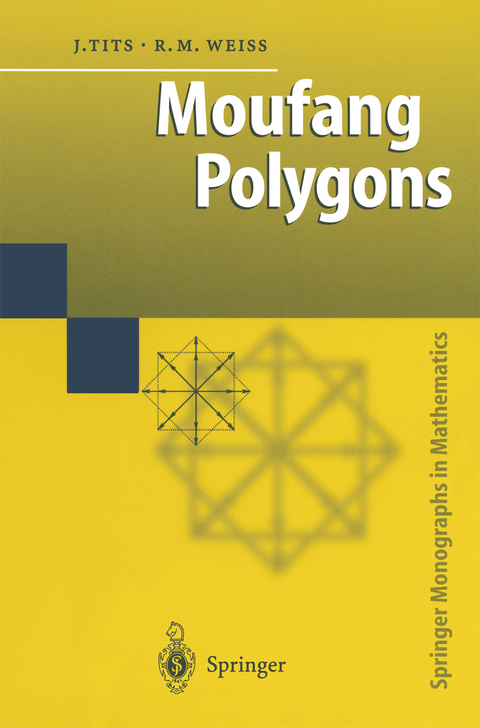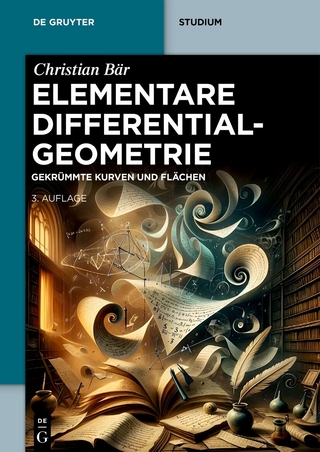
Moufang Polygons
Springer Berlin (Verlag)
978-3-642-07833-0 (ISBN)
I Preliminary Results.- 1 Introduction.- 2 Some Definitions.- 3 Generalized Polygons.- 4 Moufang Polygons.- 5 Commutator Relations.- 6 Opposite Root Groups.- 7 A Uniqueness Lemma.- 8 A Construction.- II Nine Families of Moufang Polygons.- 9 Alternative Division Rings, I.- 10 Indifferent and Octagonal Sets.- 11 Involutory Sets and Pseudo-Quadratic Forms.- 12 Quadratic Forms of Type E6, E7 and E8, I.- 13 Quadratic Forms of Type E6, E7 and E8, II.- 14 Quadratic Forms of Type F4.- 15 Hexagonal Systems, I.- 16 An Inventory of Moufang Polygons.- 17 Main Results.- III The Classification of Moufang Polygons.- 18 A Bound on n.- 19 Triangles.- 20 Alternative Division Rings, II.- 21 Quadrangles.- 22 Quadrangles of Involution Type.- 23 Quadrangles of Quadratic Form Type.- 24 Quadrangles of Indifferent Type.- 25 Quadrangles of Pseudo-Quadratic Form Type, I.- 26 Quadrangles of Pseudo-Quadratic Form Type, II.- 27 Quadrangles of Type E6, E7 and E8.- 28 Quadrangles of Type F4.- 29 Hexagons.- 30 Hexagonal Systems, II.- 31 Octagons.- 32 Existence.- IV More Results on Moufang Polygons.- 33 BN-Pairs.- 34 Finite Moufang Polygons.- 35 Isotopes.- 36 Isomorphic Hexagonal Systems.- 37 Automorphisms.- 38 Isomorphic Quadrangles.- V Moufang Polygons and Spherical Buildings.- 39 Chamber Systems.- 40 Spherical Buildings.- 41 Classical, Algebraic and Mixed Buildings.- 42 Appendix.- Index of Notation.
From the reviews:
"In this excellently written book, the authors give a full classification for Moufang polygons. ... The book is self contained ... . the content of the book is accessible for motivated graduate students and researchers from every branch of mathematics. We recommend this book for everybody who is interested in the developments of the modern algebra, geometry or combinatorics." (Gábor P. Nagy, Acta Scientiarum Mathematicarum, Vol. 71, 2005)
"The publication of this long-awaited book is a major event for geometry in general, and for the theory of buildings in particular. ... The classifications established in this book are splendid achievements of fundamental significance. The whole book is extremely well written, in a clear and concise style ... . It is the definitive treatment and a standard reference." (Theo Grundhöfer, Mathematical Reviews, Issue 2003 m)
"This book contains the complete classification of all Moufang generalized polygons, including the full proof. ... So, in conclusion, the book is a Bible for everyone interested in classification results related to spherical buildings. It is written in a very clear and concise way. It should be in the library of every mathematician as one of the major results in the theory of (Tits) buildings, (combinatorial) incidence geometry and (algebraic) group theory." (Hendrik Van Maldeghem, Bulletin of the Belgian Mathematical Society, Vol. 11 (3), 2005)
| Erscheint lt. Verlag | 5.12.2010 |
|---|---|
| Reihe/Serie | Springer Monographs in Mathematics |
| Zusatzinfo | X, 535 p. |
| Verlagsort | Berlin |
| Sprache | englisch |
| Maße | 155 x 235 mm |
| Gewicht | 824 g |
| Themenwelt | Mathematik / Informatik ► Mathematik ► Geometrie / Topologie |
| Schlagworte | Algebra • buildings • classification • combinatorics • generalized polygons • Graph • graph theory • Incidence geometry • Polygon |
| ISBN-10 | 3-642-07833-8 / 3642078338 |
| ISBN-13 | 978-3-642-07833-0 / 9783642078330 |
| Zustand | Neuware |
| Informationen gemäß Produktsicherheitsverordnung (GPSR) | |
| Haben Sie eine Frage zum Produkt? |
aus dem Bereich


